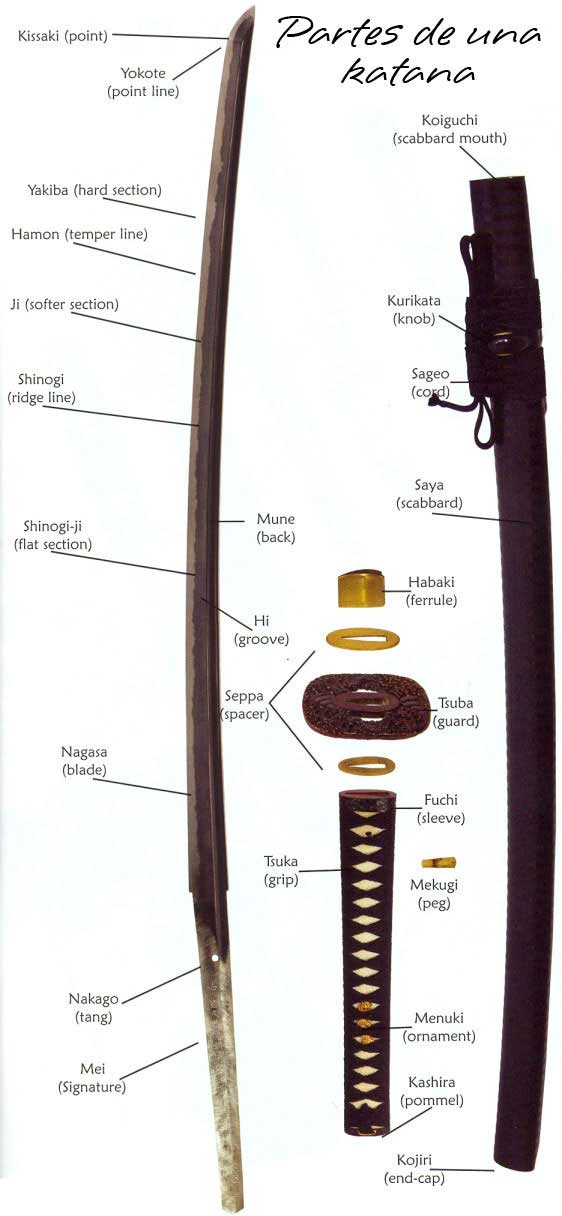What is Tsuka?
The Tsuka is the handle of the katana, the emblematic Japanese sword known for its craftsmanship excellence and historical relevance. This component is not only crucial for handling and balancing the weapon but also plays an important role in its aesthetics and cultural symbolism. The Tsuka's structure is precisely designed to provide the user with a secure and comfortable grip during combat, implying that its size and shape must adapt to the individual needs of the practitioner.
Commonly, the Tsuka is made of wood, which gives it the necessary lightness and strength. It is also covered with a wrapping called samegawa, which comes from ray skin or, in some cases, from snake. This skin not only beautifies the katana but also provides a firm and non-slip grip. On top of the samegawa, there is the ito, a braided cord that increases the contact area and facilitates a secure hold. The combination of these elements is essential to ensure optimal handling of the weapon.
At the top of the Tsuka, we find the fuchi, a metal sleeve that protects the wood from wear and serves to anchor the tsuba (handguard) and the habaki (sleeve that holds the blade). Its design is not only functional but often features engravings and symbols that reflect the identity of the bearer. At the bottom, the kashira provides a similar aesthetic and functional finish, protecting the end of the Tsuka and offering support for the menuki, which are small decorations that, besides embellishing, help optimize the grip.
The design and quality of the Tsuka are vital for the handling and effectiveness of the katana. A well-built Tsuka can significantly enhance the maneuverability and control of the sword, while poor quality in its manufacture can lead to imbalance and difficulty in use. For these reasons, it is recommended that the Tsuka be carefully selected and crafted by sword forging experts.
The proper maintenance of the Tsuka is essential to ensure both the functionality and durability of the katana. It should be kept clean and lubricated to prevent oxidation and corrosion. Additionally, it is important to protect the Tsuka from impacts; a blow or damage could compromise its integrity and, therefore, the effectiveness of the katana. Meticulous care will prolong the weapon's lifespan and ensure that it maintains its balance and performance during use.

















